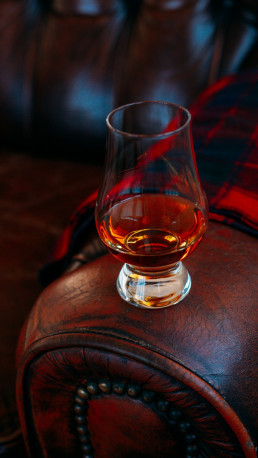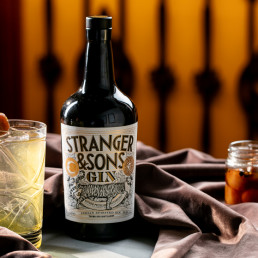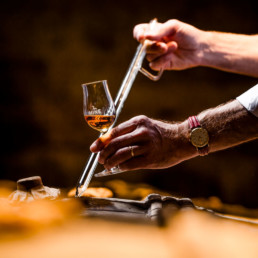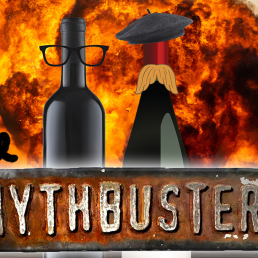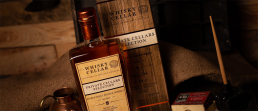
“At its heart, Scotch Whisky is for enjoying – whether that’s drinking it or collecting it.”
Keith Bonnington, The Whisky Cellar Founder
In the halcyon days not so long ago, a single bottle of scotch whisky shattered the record for most expensive wine or spirit ever sold at auction. The Macallan Fine and Rare 60-Year-Old fetched a staggering $1.9 million USD. Why so much you ask? Well, the 1926 vintage malt was drawn from a legendary barrel, prized by collectors for its near-mystical characteristics. To some, this may seem astonishing, but for true connoisseurs of fine scotch whisky, nothing will do but the absolute best.
And Scotland has produced some of the best whiskies the world has ever seen. To appreciate the complexity and intricacies of a fine bottle of Scotch, one develops an adoration, indeed, an obsession with Scotch whisky.
Incredibly, there is this parallel universe out there with people who are as aggressively passionate about fine whisky as we are about fine wine. The seemingly endless pursuit of exceptional flavours is a habit of whisky drinkers the world over! The fervour surrounding a great whisky should not be a surprise to anyone. Let alone us at Dhall & Nash.
So, it is Dhall & Nash’s distinct privilege to unveil The Whisky Cellar’s Series 003 of highly anticipated, rare, collectible, and guaranteed-to-sell-out, exclusive Scotch Whiskies.
This exceptional collection explores different styles with an array of colours, aromas, and flavours. The Whisky Cellar is a real cellar. They select casks they love and mature them. They pick whiskies to be loved, not because they know they’ll sell them; but because this is their moment.
“These are drams for different moments. It’s a collection of whiskies from large and small distilleries with varying age statements. It is the whisky’s uniqueness that earns it a place in the cellar.”
The Whisky Cellar website
Meet The Founder: Keith Bonnington
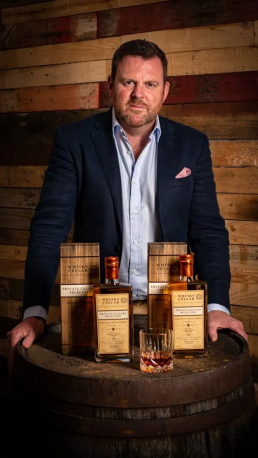
The Whisky Cellar is a high-quality *independent bottler run by Keith Bonnington, a man who has lived and breathed scotch whisky for over two decades. He works with a panel of tasting experts to ensure only the very best whiskies are bottled for The Whisky Cellar. Between them, the panel has over 200 years’ experience. So, you know these single cask whiskies must be good!
Keith has been fortunate to have made a career from something he loves and his contribution to the industry was recognised in 2013 when he was bestowed the honour of ‘Keeper of the Quaich’. More fortunate still is to have access to, from very reliable and established sources, a wide assortment of incredible casks for his own independent bottlings.
The term ‘whisky’ comes from the Gaelic ‘uisge beatha’ or ‘usquebaugh’, meaning water of life.
For us at Dhall & Nash, we were impressed with the fantastic quality of The Whisky Cellar releases and counted ourselves fortunate to be able to secure a limited allocation from Keith bringing these unique whiskies to the NZ market. Each bottling in Series 003 is a fantastic representation of what the distilleries do, showcased with no-chill filtration or colour additions and at cask strength, making these releases as close to drinking from the cask as possible. An exceptional taste experience!
Bonnington explains their independent bottling approach, “We are a flavour diversity driven bottler, and our core message is that, if we love the spirit enough, we will bottle it, irrespective of age, region, cask type or style. We want to bring to market extremely high-quality one-off whiskies which represent good value to the consumer.”
After decades of relationship building in the industry and with a comprehensive network of sources plus an expert panel of testers, including master whisky maker Max Macfarlane, The Whisky Cellar selects exclusive and exquisite single casks of Scottish whisky. Basically, if he likes it enough and the story is an interesting one, the whisky is bottled – but only when Keith thinks the time is right to do so. These Private Cellars Selection 003 Series Keith thinks would make a really interesting ‘tasting flight’, exploring all the different styles.
When it comes to maturing and finishing, bourbon, sherry, and madeira casks are used which give the whiskies that extra touch of something special. All the whiskies are placed on the market at cask strength and, as exclusive individual bottlings, and extremely limited editions. Keith hopes that his whiskies will bring you as much joy as creating this selection did for him. Sláinte!
“We’re unconstrained by age, vintage, regionality or cask type. If our tasting panel loves the whisky, we bottle it.”
Keith Bonnington, Founder
* The Keeper of the Quaich is awarded to those who make an outstanding contribution to the Scotch whisky industry for at least five years and outstanding Keepers may progress to become Masters of the Quaich.
^ Whisky from independent bottlers is unique, artisan, and invariably great value. Their whiskies are limited editions, usually in the form of single cask releases, but sometimes small batch vatted or blended releases. They can be a great way to experience a big-name distillery in a pure and focussed way, for example as a single cask release. And they can be a unique route to trying little-known distilleries. The independent bottler has reminded the rest of the industry about the opportunities that arise from engaging whisky enthusiasts with interesting and unusual expressions. We can all drink to that, so here’s to the spirit of the independents like The Whisky Cellar!
The Whisky Cellar's Series 003
For connoisseurs and newbies alike, savour Scotland’s finest with these top bottles from prestigious The Whisky Cellar Series 003:
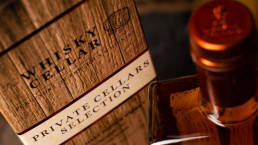
“For me what’s in the glass is a culmination of everything that has gone before. The raw materials, the equipment, the place, the hands that have crafted it, the wood that has helped mature it, the people who count on the industry for employment – everything. I’m incredibly proud of our industry, the history of it and the high esteem in which Scotch is held the world over.”
Keith Bonnington, Founder The Whisky Cellar
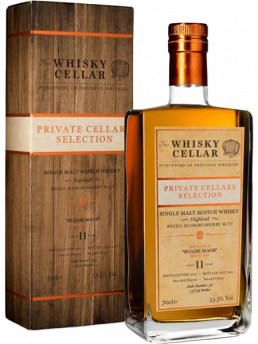
Ruadh Maor Single Malt Scotch Whisky
Aged 11 Years
‘Ruadh Maor’ is the trade name given to this curiously heavily-peated Highland Malt, distilled at a single distillery in the lower-Highland region in February 2010 and filled into a refill Sherry Butt before being bottled in August 2021.
ABV: 55.3%
Colour: Bright Gold.
Nose: Barbeque smokehouse aromas. Liniment oil, black pepper and yellow sultanas.
Palate: Smoked meats with a sweet barbeque glaze. Some chocolate covered raisins.
Finish: Savoury meat roasting juices with a dusting of sugar and sweet spice. Great balance.
Bottles Produced: 719
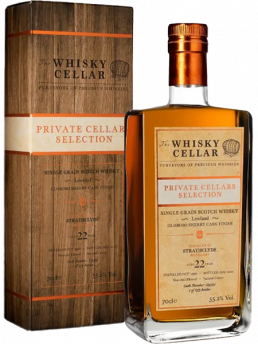
Strathclyde Single Grain Scotch Whisky
Aged 22 Years
Another whisky from our exploration of Single Grains, this Strathclyde was aged for 22 years – distilled in October 1998 and bottled in August 2021, having been finished in a first-fill Oloroso Sherry Hogshead.
ABV: 55.2%
Colour: Deep Amber
Nose: Polished oak, caramel shortbread, and ripe red forest fruits
Palate: Redcurrant jam, spearmint toffees, lychee, and salted caramel
Finish: A touch of spice on a long lingering finish with the red fruits adding a delicious tang
Bottles Produced: 253
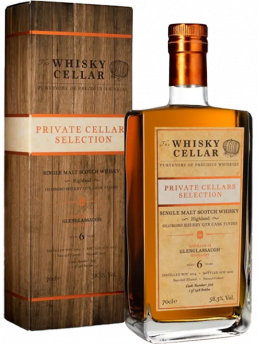
Glenglassaugh Single Malt Scotch Whisky
Aged 6 Years
Glenglassaugh Distillery produces a medium bodied spirit with a heather-honey sweet style and this particular whisky, was distilled in November 2014 and bottled in August 2021 having spent a lengthy period of ‘finishing’ in a first-fill Oloroso Sherry Quarter Cask.
ABV: 58.5%
Colour: Tawny Brown
Nose: Strawberry fondant, peppery warmth, and dark toffee
Palate: Sweet notes of plum jam, dark chocolate, and strawerry tart with the warmth of red peppercorns
Finish: Great structure and length for a relatively youthful whisky. Rich chocolate covered cranberries
Bottles Produced: 148
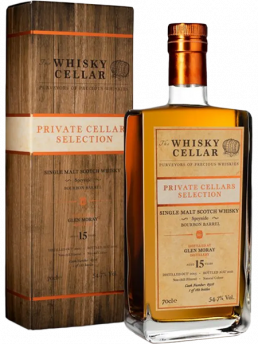
Glen Moray Single Malt Scotch Whisky
Aged 15 Years
Another bottling from Glen Moray where the refill American Oak maturation has allowed the light and delicate spirit to take centre-stage. This whisky was distilled in October 2005 and bottled in August 2021 having spent its 15 years in a single ex-bourbon Barrel.
ABV: 54.7%
Colour: Pale Gold
Nose: Ripe green apples and vanilla custard tart. Some gentle spice in the background
Palate: The sweetness of vanilla is the star, with some gentle fruits, delicate spice and vintage confectionary. Nothing overwhelms and the balance is superb
Finish: Lingering sweet fruits – apple strudel and cinnamon spice
Bottles Produced: 182
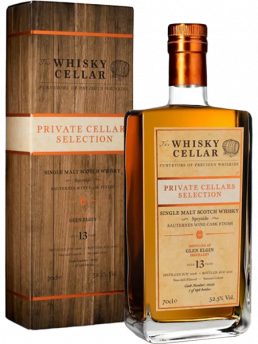
Glen Elgin Single Malt Scotch Whisky
Aged 13 Years
This Glen Elgin Single Malt Scotch Whisky is a classic Speysider with a fuller body than most and an inherently luscious fruit character. This is a rare Sauternes Cask finish, distilled in June 2008 and bottled in August 2021.
ABV: 52.5%
Colour: Bright Gold
Nose: Intensely sweet honey covered yellow stone fruits with bold floral notes
Palate: The sweetness of the Sauternes wine is carried well on the palate alongside a touch of aniseed, buttery bakes, and dark honey
Finish: Long and lip-smackingly sweet
Bottles Produced: 298
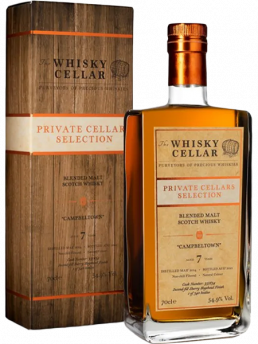
Campbeltown Blended Malt Scotch Whisky
Aged 7 Years
This is another of those ‘tea-spooned’ malts, made overwhelmingly from a single distillery but with a drop of something added to protect the brand’s anonymity. These can be incredibly good value and this whisky, distilled in March 2014 and bottled in August 2021 was finished in a refill Oloroso Sherry Hogshead to add a layer of sweetness to a classically Campbeltown-styled distillate.
ABV: 54.9%
Colour: Deep Gold
Nose: Chilli oil, charred oak, and yellow sultanas
Palate: Sea salt spray, waxy citrus peels, oak smoke, ginger spice and dry roasted nuts
Finish: Lingering and oily with a superb Campbeltown salinity
Bottles Produced: 340
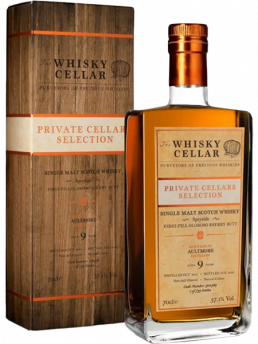
Aultmore Single Malt Scotch Whisky
Aged 9 Years
The heavy new-make style of Aultmore lends itself perfectly to Sherry cask maturation and here is whisky from this very distillery, distilled in October 2011 and bottled in August 2021, that spent its entire maturation in a first-fill Oloroso Sherry Butt made from American (not the typical Spanish) Oak.
ABV: 57.1%
Colour: Burnished Copper
Nose: Creamy mocha, barley sugar, dark fruits, and butterscotch
Palate: Condensed milk, fresh roasted Arabica coffee beans, California raisins and peanut brittle
Finish: Mouth-filling and sweet with a creaminess that lingers long
Bottles Produced: 739
We asked the Keeper of the Quaich, Keith, what trend he sees as the next big thing on the whisky horizon? “I have high hopes for single grain and will deliberately champion this category because I think it is completely misunderstood and generally under-rated, especially at the older end of the spectrum. I defy any whisky drinker to try a well-aged grain, matured in a first fill bourbon barrel and not enjoy it. It’s a bit like bourbon-on-steroids and I think there’s a big opportunity to educate and engage here.”
Whether you are already one of those Whisky aficionados captivated by the wealth of aromas and tastes or you are just entering into the exciting world of whiskies – you will all surely appreciate hand-crafted fine spirits and, especially, the special classiness of carefully selected Scottish whiskies from The Whisky Cellar. One way or the other, you are in the right spot.
Here at D&N, we have become massive fans of The Whisky Cellar. We love what they do, the passion they bring, and the knowledge they share. We’re delighted to work with Keith Bonnington and his collaborators to share their indie whiskies, their craft and hope you too will partake in the pleasure of a bottle or more of the very collectible Series 003. There’s a dram for everyone in these Special Selections.
But be prepared, once you see a bottle that appeals, you should move fast. Due to the nature of small batch and single cask whisky, many of these Whisky Cellar Special releases are available in very limited quantities and the number of bottles that reach this part of the world can be frustratingly small. So do not delay – Grab your rare and precious favourites fast!
For Keith Bonnington, whisky is “always a loyal companion in times of reflection, concentration, grief and celebration. It is always treated with due respect and has vouchsafed him so many unforgettable moments over time.”
Fun Fact:
Scotch whisky contributes nearly £5 billion a year to the UK economy.
Have a Taste...
On July 20th join us with Keith
To celebrate the very special New Zealand launch of The Whisky Cellar’s Series 003, Dhall & Nash have organised a special Tasting Event in Auckland this July 20th, where Keith himself will (remotely) be taking us and our palettes on a special tour through his latest collection.
To register your early interest, please email our new Spirits Ambassador, Jack Wharton at jack@dnfinewine.com and grab an early spot while we finalise the details.
Whisky Geek Talk
The world of fine whisky can seem intimidating to start, as people tend to wax romantically about tasting notes and the complexity on the palate – just like wines! But there’s no reason for anyone to feel scared off by scotch whisky, whether it’s a single malt, single grain, or blended. To truly appreciate a good Scotch whisky, it does help to understand its terminology and the process that transforms ordinary barley into an extraordinary drink. Time to deep dive into the wondrous world of whisky.
Fun Fact:
Scotch whisky contributes nearly £5 billion a year to the UK economy.
Independent Bottler
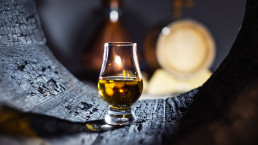
If you’re a whisky fan, you’ve probably seen this term thrown around – here, we break down what independent bottlers are, the awesome work they do, and thus better understand our favourite indie bottler – The Whisky Cellar.
Scotch whisky has a rich independent bottling sector, producing excellent whiskies as good as anything to come from a distillery-associated brand. Independent Bottlers are not a new thing. They have been around since the Dawn of Whisky (i.e., ages).
Distilleries don’t own every cask of whisky hidden in the warehouses of Scotland. They might make the spirit, but as soon as it leaves the still, all bets are off. Distillers swap and sell both new spirit and casks of mature whisky, and behind the scenes there is a network of brokers who keep the whole process running.
The end result is that there are lots of other whisky companies out there, independent of the distilleries who made the whisky. Whether it’s single casks and small-batch single malts, whiskies that don’t show a distillery’s usual character, boutique blends and blended malts, grain whisky, or something that falls between the cracks, indies have something for everyone!
Fun Fact:
John Jameson, the founder of Jameson’s Irish whisky was Scottish.
Here’s Some of the Processes the Independent Bottler can Utilise:
- They might sell the whisky as a ‘Single Cask Whisky’. When making a bulk batch of whisky, it is important to the original distiller that each bottle tastes the same – so they will blend all the casks in a huge vat, so each resulting bottle tastes the same (similar concept to N.V. Champagne). In reality, each cask has a unique flavour (depending on the cask it is in, where in warehouse the particular cask is housed etc) so the indie bottler may choose to bottle directly from the cask, hence the name ‘single cask whisky’.
- They might take the original cask and mature it in a different climate or transfer the whisky to a different cask for maturing, resulting in a totally different ‘finish’.
- They might create a boutique blend where they may blend multiple whiskies to create a new, unique (often experimental or innovative) blended whisky.
Depending on the trade agreement they have with the source distillery, some independent bottlers will credit the original distiller on the label, and some will sell the whisky with no mention of the original distiller.
Independent bottlings – For some who reach a level of nerdiness in their whisky drinking life, where they just want to try something else apart from the official bottlings – enter the independent bottler like The Whisky Cellar. Whilst the established distilleries produce amazing liquids, and their official bottlings are great, people are always striving to try something a bit new. The idea of craft and small batch is nothing new in the spirits industry, and people desire that in whisky as well. Independent bottling offers you the chance to try a side of that distillery you might not have tried before, because often they will be single casks or the marriage of one or two casks — not necessarily a marriage of dozens.
One of the awesome aspects of independent bottling is that they have the freedom to experiment with casks, maturing and blending that the larger distilleries don’t – and we think their experiments have amazing results!
Another great aspect of independent bottling is that it allows great whisky to be purchased at a fraction of the original price – as independent bottlers don’t have the enormous overheads that distillers do.
Fun Fact:
Distilled alcoholic beverages made from gluten grains are gluten-free due to distillation removing gluten proteins.
What type of Scotch whisky is it?
There are 5 different categories of Scottish whisky, and each category boasts some phenomenal choices. Here’s the different types and what that means:
Single Malt: The easiest way to understand this term is to break it down into two parts: “single” refers to one distillery, while “malt” refers to how the whisky is made. Then this is whisky made from 100% malted barley from one single distillery by batch distillation in pot stills. Single malts are celebrated (with justification) as being the highest quality Scotch whisky compared to the other types. From 2012, Single Malt Scotch Whisky must be bottled only in Scotland.
Blended malt: This is whisky made from 100% malted barley produced in two or more distilleries.
Single Grain: Under scotch whisky law, if a whisky isn’t made from malted barley, it legally is defined as ‘grain’, which 99% of the time means corn (maize) or wheat.
Blended Grain: Like with the blended malt, this is whisky made from wheat or corn that has been produced at two or more distilleries.
Blended: A mix of malt whisky and grain whisky from two or more distilleries. Almost nine out of 10 bottles of Scotch enjoyed around the world are Blended Scotch Whiskies.
This category is the foundation of the industry and the art of the Master Blender, combining up to 60 different Scotch Whiskies, is a skill which is revered. The aim of the blender is to produce a whisky of a definite and recognisable character, and that the blend should never vary from this standard, which customers all over the world will have come to enjoy and love.
Fun Fact:
The record for the largest bottle of whisky goes to the distillers of Famous Grouse, who created 1.7-metre bottle containing 228 litres of whisky.
How is Whisky Made?
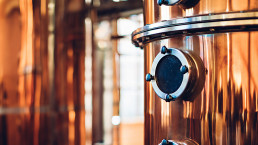
The production process of scotch whisky is surprisingly simple. It involves malting, mashing, fermentation, distillation, and maturation.
1) Malting — the process of turning barley into malt, very similar to the early stages of making beer. Barley is soaked or “steeped” in water, drained, then spread out on the malting floor to germinate. During the germination process (generally 6 or 7 days), enzymes are released, which convert the starches into maltose, a sugar. At this point, the malted barley is dried using the smoke from an underground furnace called a “kiln.” The fire for the furnace is often stoked with peat which is why you’ll hear scotch drinkers refer to a “smoky peat” flavour in many whiskies.
2) Mashing — the dried malt is then ground into a course flour with the consistency of oatmeal, called “grist.” The grist is then mixed with hot water and pumped into a vessel called a “mash tun.” In the mash tun, the water and ground malt are thoroughly mixed and allowed to steep so that the sugars in the malt are released into liquid. This sugary liquid is called “wort.”
3) Fermentation — the wort is then drawn off and pumped into large wooden or steel vessels called “washbacks.” Once there, it is combined with yeast and allowed to ferment. The length of fermentation can be different depending on the environment, but it generally takes about two days. The living yeast feeds on the sugars, producing alcohol and small quantities of other compounds known as congeners, which contribute to the flavour of the whisky. The resulting liquid is anywhere from 5-8% alcohol by volume and is called “wash.”
4) Distillation — the wash is distilled twice (single malt in a pot still, grain whisky in a Coffey still). The first still is the wash still and is used to separate the water from the alcohol by boiling the wash, collecting the evaporated alcohol which condenses at the top and collecting it in a condenser. The resulting liquid is called “low wine” and is approximately 20% alcohol by volume.
The low wine is then sent through the second still, also called the “spirit still.” This process is slower, and the climate must be very closely monitored. The stillman discards the first part of the distillate, called ‘foreshots’ and the last part known as ‘feints,’ because these contain unpleasant higher alcohols. The centre part of the distillation is preserved, and this is the whisky we drink. This spirit is colourless and gets its colour during maturing in oak barrels.
(By law, single malt Scotch must be made on pot stills – those graceful, curving copper things without any plates in the neck. Unlike column stills, pot stills can only work in batches – wash goes in, spirit comes out, backset is removed, and still is recharged.)
5) Maturation — the unfinished Scotch is then placed in oak barrels, or casks, for the maturation process to begin. Throughout the maturation the whisky becomes much smoother, increases in flavour, and begins to retain the golden colour of the barrels inside which it rests. Traditionally second-hand sherry barrels were used to age whisky, but today bourbon barrels are as common. Some producers experiment with other varieties including port, beer, cognac, and even wine. Each barrel passes on a distinct flavour to its contents.
In order to be considered “Scotch” is must be aged in Scotland for at least three years. Though each whisky reaches its maturation at different ages, most are now aged anywhere from 8-20+ years. Many feel that the longer a scotch is aged the smoother and more flavourful it becomes — old whiskies are also rarer and cost quite a bit more.
Fun Fact:
The Scottish Parliament first taxed whisky in 1644.
Understanding the Regions
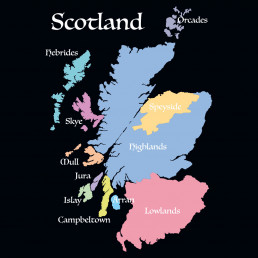
Just as in the wine world, where names like Napa Valley, Burgundy, or Chianti tell someone not just where a wine is made, but what to expect as far as variety and character, Scotch whisky has its own geographic intricacies.
Lowland — the whisky of this region is generally considered to be more mild, mellow, and delicate. The three distilleries in operation include: Glenkinchie, Bladnoch, and Auchentoshan.
Highland — the largest geographic region for Scotch includes well-known distilleries such as: Dalmore, Glenmorangie, Oban, Talisker, and Dalwhinnie.
Islay — known for heavier, more smoky Scotch varieties, it has eight distilleries, each with their own unique character including: Ardbeg, Bowmore, and Laphroaig to name a few.
Speyside — adjacent to the River Spey, the area with the largest number of distilleries to include: Glenfiddich, Aberlour, The Glenlivet, and The Macallan.
Campbeltown — the smallest of the whisky producing regions, once home to several distilleries, but now only home to three: Glengyle, Glen Scotia, and Springbank.
Cask strength – refers to whisky that comes directly out of the barrel, not proofed down by water. A lot of whisky is diluted with water to bring it down to 40% abv (alcohol by volume). However, some distillers will add less water and dilute it to taste. Sometimes, no water is added at all. These whiskies are usually labelled “cask strength” and are often bottled at 50% abv or higher.
Fun Fact:
Some 42 bottles of whisky are exported from Scotland every second.
What Does ‘Teaspooning’ Mean?
Some distilleries take great pains to avoid their casks entering the third-party supply chain and have been known to adopt the practice of “teaspooning” which is adding a minute quantity of another whisky to casks of a well-known single malt in order to prevent them from being bottled under the original identity – they are then required to be labelled as ‘Blended’. Smart independent bottlers have long concluded that it isn’t worth the risk of legal action to bottle those brands, even if they could get a cask, which may explain the availability of at least some of those mysterious bottles with a generic regional descriptor rather than a specific distillery name.
What Does ‘First Fill’ Mean?
A cask that has previously been used to age sherry, port, bourbon, or other aged wines or spirits, and is now being used to age another whisky for the first time. First-fill casks impart the most prominent characteristics of the previous liquid on to the whisky, while each subsequent fill (refills) will receive progressively less influence.
Fun Fact:
Early in 2018, the world’s first regulated whisky investment fund was launched. Single Malt Fund allows investors to buy a small part of a bigger collection of rare and limited-edition whiskies.
What is Meant by the Term 'Finishing'?
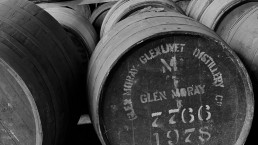
Scotch Whisky must be matured in oak casks for a minimum of three years and is often matured much longer. ‘Finishing’ is an extension of the maturation process, when the spirit is subsequently filled into empty casks that previously held other wines or spirits for a further period at the end of maturation. The cask used for finishing must have been drained of any liquid prior to its use and any change in the spirit will therefore result from its interaction over time with the wood of the cask.
It takes years to make good whisky, and it takes just as long to learn which casks to bottle. The Whisky Cellar was built on years of industry experience. And you can taste it in every drop.
Cask size – has a significant influence on the speed of whisky maturation and therefore on the whisky’s taste. In a small cask, the ratio of whisky to cask wall is higher than in a large cask. The larger the cask, the less contact there is between whisky and wood and the slower the whisky matures. However, a faster maturation process is not necessarily the better one. Below you will find the most common cask sizes in the whisky industry and what each size of cask means for the maturation of whisky.
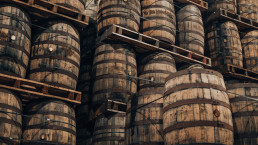
Fun Fact:
In 2017 Scottish scientists powered a car using a biofuel derived from whisky residue.
American Standard Barrel (Bourbon Barrel) – Predominantly used to mature bourbon, these 200 litre casks are most commonly made using American white oak. Scotch whisky is most frequently aged in these used Bourbon barrels as by law in America, Bourbon is required to be always aged in new oak barrels (first-fill). It’s a great symbiotic relationship that exists between bourbon and Scotch whisky producers. For economic reasons, it has become standard practice in Scotland to mature whisky in these used Bourbon casks. Bourbon barrels add, for example, vanilla and a light sweetness.
Hogshead – Once a measure for wine and ale, these 230-250 litre casks are nowadays popular for maturing whisky. The size of hogsheads means that there is less interaction with the wood than in smaller casks, allowing for a longer maturation period. A hogshead, or ‘hoggie’, is essentially a reconstructed barrel fitted with extra staves of other casks. For example, a Bourbon barrel with additional staves becomes an ‘American hogshead’ or ‘Bourbon hogshead’ and holds about 250 litres. Hogsheads can also be made from the staves of former Sherry casks, which also contain around 250 litres.
Port Pipe – Anything from 350 litres up, Port pipes rank among the biggest casks used and are usually around the size of a butt. Named for the Portuguese word ‘pipa’ – meaning cask – these are used to mature port and have been used to mature whisky more and more in recent years.
Butt – In the sherry industry, butts comprising as much as 500 litres are very widespread and common. The term ‘butt’ is derived from the Italian word ‘botte’, which means cask. In the past, sherry and port were transported in these casks across the English Channel to the UK. As with the Bourbon casks, the Scots took the opportunity to save money by maturing their whisky in the used sherry casks that were already there. Sherry casks lend richer sweetness with a range of fruit cake and dried fruit notes. Other sherry terms may appear on labels as ‘PX’, ‘Fino’, and ‘Oloroso’.
Puncheon – The puncheon is an old English unit of measurement, after which this type of cask was named at some point. Puncheons are widely used for maturing sherry. Like a butt, a puncheon also holds 500 litres, but it is shaped in a slightly different way. It is wider and more compact. Some puncheons are also built bigger than others (up to 700 litres) – or smaller if they are used for the maturation of rum. In whisky production, however, the most common puncheon is the sherry puncheon.
Madeira Drum – The fortified wine of the same name comes from the Portuguese island Madeira. It matures in the so-called ‘Madeira drums’ that have a capacity of 650 litres. These drums are even more compact than the similar sherry butts or port pipes. In Whisky maturation, Madeira drums are particularly popular for finishes, to add the aromas of Madeira wine to the whisky before bottling.
Barrique – originally from France to age and transport wine. Accordingly, most barriques are made of French white oak and are slightly larger than hogsheads. About 225 litres of whisky can be stored in one barrique. This whisky naturally absorbs the aromas of the wine from the cask.
Quarter casks – are smaller casks in which whisky often matures to gain more flavour. The smaller the cask, the higher the contact between whisky and cask wall and the more flavours the whisky can absorb. Quarter can mean either a quarter of a butt, i.e., 125 litres or a quarter of an American Standard Barrel, i.e., 50 litres. These cask sizes used to be very popular because they made it easier to transport liquids. Today, it is the advantage of faster maturing that makes quarter casks so popular, especially for secondary maturation.
Octave cask – contains only about one eighth of a butt, about 50 litres. Like in a quarter cask, there is a lot of interaction between the whisky and the oak wood in the Octave, which means that the malt absorbs a lot of aromas relatively quickly. However, an octave is somewhat rounder in shape than a quarter cask.
What is the Alcohol Strength of Whiskies?
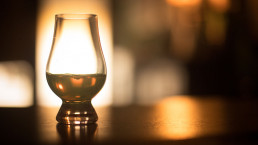
What is the alcohol strength of whiskies? If a whisky is between 40-50% alcohol by volume (ABV) this means that water was added before the whisky was bottled. 51%+, usually means that the whisky is ‘cask strength’, that it was bottled without adding extra water. Keep in mind that many older cask strength whiskies (25 years+) might still be cask strength even if the ABV dips below 50%. A higher alcohol strength isn’t always an indicator of quality, but generally cask strength whisky tends to be consistently good.
“What whisky will not cure, there is no cure for”
– Proverb.
What Does it Mean by ‘Expression’?
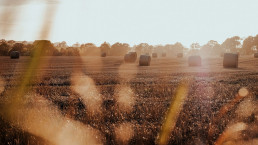
Many distilleries produce more than one type of whisky. The ratio of grains used in the mash might vary, it could be fermented or distilled in a slightly different way, aged for a variety of time periods, or different casks may be used to adjust how the finished whisky tastes. Some distilleries call each new variation on their house style an “expression,” meaning it’s how flavours found in a particular whisky are expressed, conveyed, or released.
Fun Fact:
The average measure of whisky contains just 64 calories – fewer than a banana.
